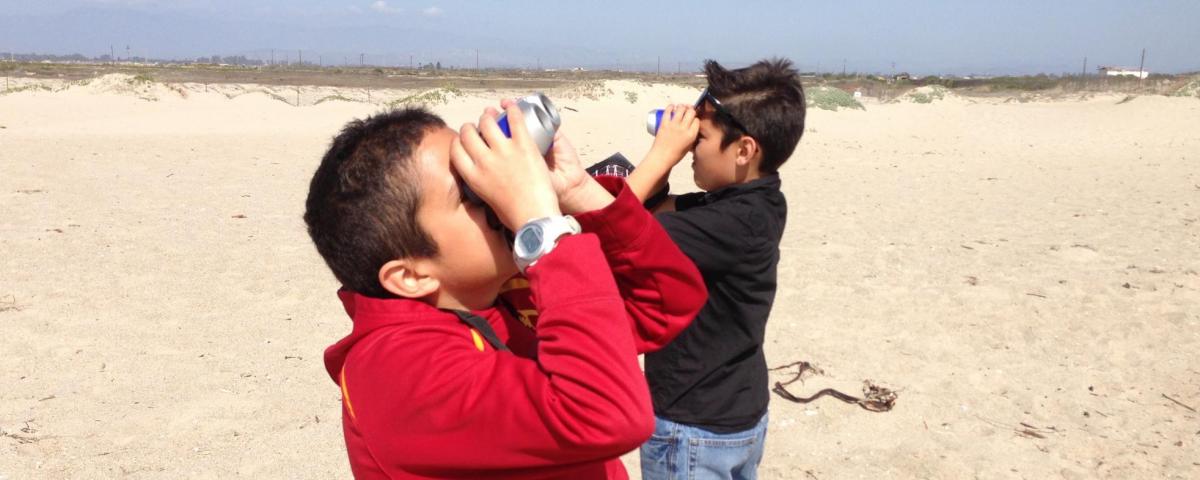Beach grooming
- The practice of mechanically removing debris, including trash, kelp wrack, shells, and draftwood, from a beach
Beach nourishment
- The practice of adding sand or sediment to a beach from an outside source, usually to combat the effects of erosion and/or maintain the beach at a desired width
Biodiversity
- The variety of life in a particular habitat or ecosystem
Coastal armoring
- Physical structures that protect the shoreline from coastal erosion, such as seawalls, revetments, breakwaters, and sandbags
Coastal squeeze
- The situation in which a beach or intertidal zone narrows because it is trapped between rising sea level and fixed coastal development, lacking the ability to migrate inland.
Coastal strand
- A plant community that grows along the shore in loose sand just above the high tide line. Many plants that grow in this area are endemic to the strand.
Conservation easement
- In the United States, a conservation easement is a power invested in a qualified private land conservation organization or government to constrain, as to a specified land area, the exercise of rights otherwise held by a landowner so as to achieve certain conservation purposes
Crustacean
- A group of arthropods in the subphylum Crustacea, including organisms such as crabs, lobsters, shrimp, and barnacles
Dune
- A mound or ridge of sand or other loose sediment formed by the action of wind and waves
Ecosystem
- A biological community of interacting organisms and their physical environment
El Nino Southern Oscillation (ENSO, or El Nino)
- An irregularly occurring and complex series of climatic changes affecting the equatorial Pacific region and beyond. ENSOs are characterized by the appearance of unusually warm, nutrient-poor water off northern Peru and Ecuador, typically in late December
Erosion
- The process by which wind, water, or other natural agents wear something away, such as rock, soil, or sand.
Food web
- A group of organisms dependent on one another for sources of food
Habitat
- The natural environment of an animal, plant, or other organism
Haul out
- The behavior demonstrated by pinnipeds in which they temporarily leave the water for sites on land or ice, often for the purposes of mating, resting, or giving birth
Hummock
- A hillock, knoll, or mound
Intertidal
- The area of a seashore between the high tide line and the low tide line
Invertebrate
- An animal lacking a backbone, such as an arthropod, mollusk, or annelid
Life cycle
- The series of changes in the life of an organism, including reproduction
Littoral cell
- A discrete geographical area on the coast where sand/sediment sources deliver sand to the coast, and longshore drift and other ocean currents move that sediment along the shoreline until it is removed from the coastal system by entering sequestered locations such as dunes or submarine canyons
Managed retreat
- The planned removal or movement of structures in order to allow the rising sea level to inundate or erode the land immediately inland from the current shoreline
Pacific Decadal Oscillation (PDO)
- A long-lived El Niño-like pattern of Pacific climate variability (Zhang et al. 1997). As seen with the better-known El Niño/Southern Oscillation (ENSO), extremes in the PDO pattern are marked by widespread variations in the Pacific Basin and the North American climate. In parallel with the ENSO phenomenon, the extreme phases of the PDO have been classified as being either warm or cool, as defined by ocean temperature anomalies in the northeast and tropical Pacific Ocean.
Pinniped
- A group of fin-footed marine mammals including seals, sea lions, and walruses
Rookery
- A colony of breeding animals, generally birds, pinnipeds or sea turtles
Setbacks
- The distance a building or other structure is set back from a given location, such as a bluff edge
Shorebirds
- Birds that generally inhabit open areas of beaches, grasslands, wetlands, and tundra, including plovers, oyestercatchers, avocets, stilts, and sandpipers.
Shoreline retreat
- The landward movement of the shoreline due to erosion
Succulent
- Plants with thick and fleshy parts, usually for the purpose of retaining water in dry conditions
Suspension feeding
- A method of feeding of straining suspended matter and food particles from water, typically by passing the water over a specialized filtering structure.
Watershed
- The area of land, typically delineated by mountain ridges, from which water flows into the same place
Wrack
- Seaweed, surfgrass, driftwood, and other organic materials produced by coastal ecosystems that wash ashore on the beach


